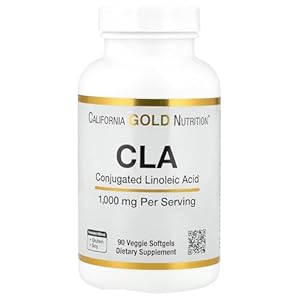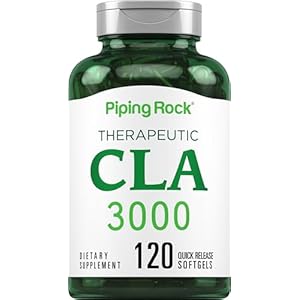
If you’ve ever considered making healthier choices in your diet, the concept of clean eating may have crossed your mind. But where do you start? What does it really mean to eat clean? Understanding the fundamentals and benefits of clean eating can pave the way for a transformative journey towards a healthier lifestyle. So, if you’re curious about how clean eating can impact your well-being and overall health, let’s explore the beginner’s guide together.
What Is Clean Eating?
If you’re new to clean eating, understanding what it entails is crucial for making informed choices about your diet. Clean eating is all about consuming whole, unprocessed foods in their most natural state. This means focusing on fresh fruits, vegetables, lean proteins, whole grains, and healthy fats while avoiding processed foods, sugary snacks, and artificial ingredients.
One key aspect of clean eating is prioritizing quality over quantity. Instead of counting calories, the emphasis is on the nutritional value of the foods you consume. By choosing nutrient-dense options, you provide your body with essential vitamins, minerals, and antioxidants that support overall health and well-being.
Another essential component of clean eating is staying hydrated by drinking plenty of water throughout the day. Water helps flush out toxins, aids digestion, and keeps your body functioning optimally. Additionally, incorporating regular exercise into your routine complements clean eating by promoting physical fitness and overall wellness.
Benefits of Clean Eating
Embracing clean eating can lead to noticeable improvements in your overall health and well-being. By choosing whole, unprocessed foods rich in nutrients, you provide your body with the fuel it needs to function optimally. Clean eating can boost your energy levels, making you feel more alert and focused throughout the day. Additionally, consuming a diet primarily consisting of fruits, vegetables, lean proteins, and whole grains can help you maintain a healthy weight and reduce the risk of chronic diseases such as heart disease and diabetes.
Another benefit of clean eating is improved digestion. Foods high in fiber, like fruits, vegetables, and whole grains, can aid in digestion and promote a healthy gut. This can lead to reduced bloating, increased regularity, and overall better gut health.
Moreover, clean eating can enhance your skin health, giving you a natural glow from within. The vitamins, minerals, and antioxidants found in clean foods can help fight inflammation and protect your skin from damage, resulting in a clearer complexion.
How to Transition to Clean Eating
To make the shift towards clean eating simpler, start by gradually incorporating more whole, unprocessed foods into your daily meals. Begin by replacing processed snacks with fresh fruits, veggies, or nuts. Swap sugary drinks for water, herbal teas, or homemade smoothies. Instead of reaching for pre-packaged meals, try cooking simple dishes using fresh ingredients.
Another way to transition to clean eating is by reading food labels carefully. Look for products with minimal ingredients and avoid those with added sugars, artificial colors, and preservatives. Choose whole grains over refined ones and opt for lean proteins like chicken, fish, or tofu.
Gradually reducing your intake of sugary treats and refined carbs can also help you transition to a cleaner diet. Start by cutting back on desserts and sugary beverages while increasing your consumption of whole foods. Remember, small changes over time can lead to long-lasting habits that support your health and well-being.
Tips for Shopping and Meal Prep
When planning your shopping and meal prep, focus on selecting fresh, whole ingredients to support your clean eating journey. Choose a variety of fruits and vegetables, lean proteins, whole grains, and healthy fats. When you shop, stick to the perimeter of the grocery store where you’ll find most of these whole foods, and try to avoid the inner aisles filled with processed items.
To make meal prep easier, set aside some time each week to plan your meals and snacks. Chop up vegetables, cook grains, and portion out snacks in advance to save time during the week. Investing in good quality storage containers can help keep your prepped ingredients fresh for longer.
When you’re preparing meals, aim for simplicity. Focus on using herbs, spices, and citrus to add flavor instead of relying on heavy sauces or dressings. This will help you appreciate the natural tastes of the ingredients you’ve chosen and keep your meals clean and nutritious.
Overcoming Common Clean Eating Challenges
Overcoming common clean eating challenges involves navigating obstacles that may hinder your progress towards a healthier lifestyle. One challenge you might face is the temptation of unhealthy foods, especially when they’re readily available. To conquer this, keep your home stocked with clean eating options and plan your meals ahead of time to avoid impulsive choices.
Another hurdle is the social aspect of eating out or attending gatherings where unhealthy foods are prevalent. In such situations, communicate your dietary preferences to friends and family, or offer to bring a dish that aligns with your clean eating goals.
Additionally, time constraints can make it difficult to prioritize meal prep and cooking. To overcome this, try batch cooking on weekends or utilizing time-saving kitchen gadgets to streamline the process. Remember, staying committed to your clean eating journey is a gradual process, so be patient with yourself as you navigate these challenges and make sustainable choices for your well-being.
Diet & Sports Nutrition














